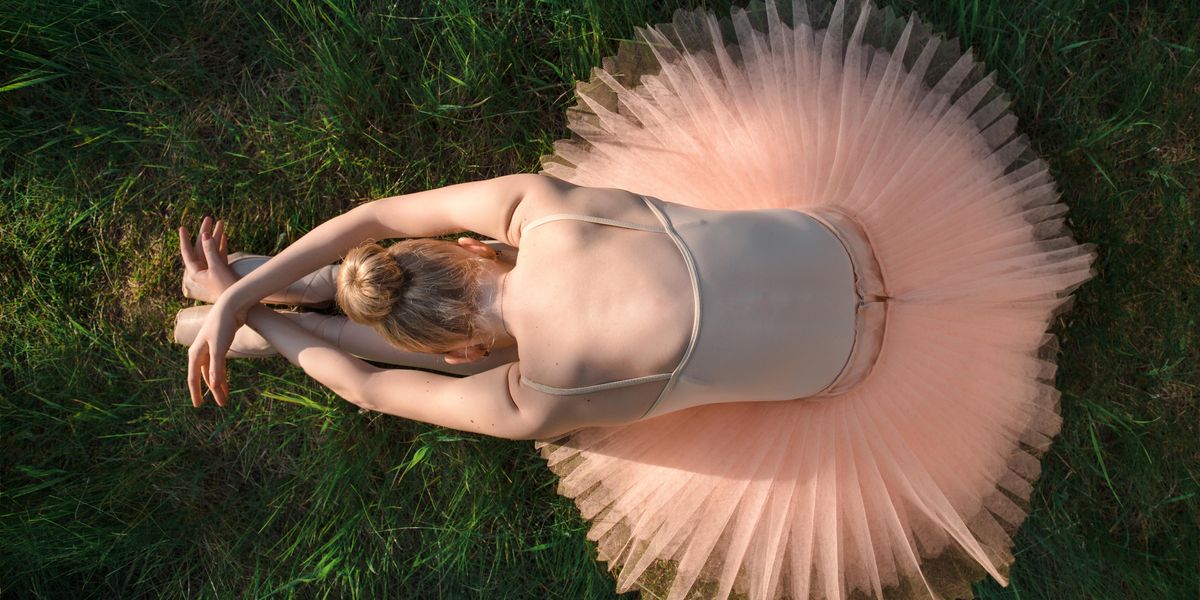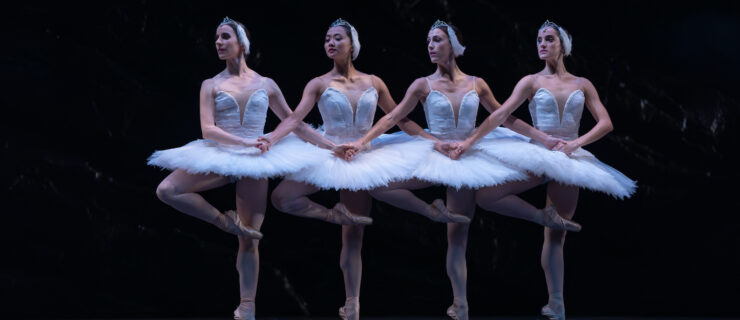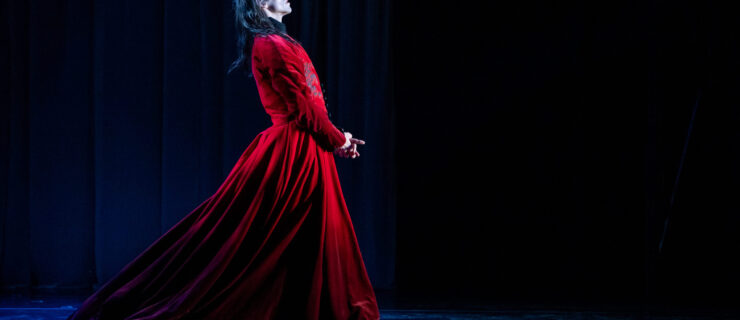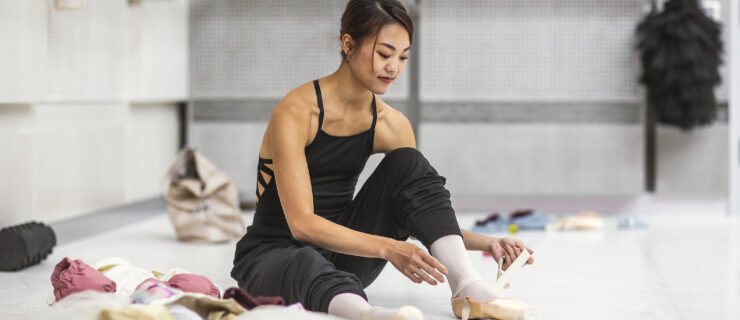The Pros on Class
Daily class may feel like the proverbial grind—like eating your vegetables before you get to the good stuff. But professionals know better: Without class, there is no good stuff. Below, six top dancers describe how they make daily class work for them.
Patricia and Jeanette Delgado, Miami City Ballet
As dancers, the Delgado sisters are like night and day. Jeanette is an athletic powerhouse; Patricia is delicate, romantic and lyrical.
But the two share a remarkably similar approach to daily class. Taught almost every day by Artistic Director Edward Villella, the “dancey” 10 am session is mandatory, they say, but that’s for the better. “It’s nice. It connects the company,” Jeanette explains. “You inspire each other.”
Each turns to Gyrokinesis and yoga to warm up, and has gradually learned to take class more thoughtfully and carefully to protect themselves from injury. They also both shed their leg warmers early on. “I make sure I take off all my junk,” Patricia says. “I know my feet are not as articulated as they could be when I can’t see them.”
Both say their goals in class are pegged to the season. “If it’s a light day,” Patricia says, “I try to push myself really hard, define my legs, do combinations more than once to get my heart rate going, get into shape, build stamina and strength.” Before a performance, they often work on role-specific technique issues. Jeanette focused on quick feet and light legs for a week in class before she performed Balanchine’s Square Dance. When there’s a matinee, Patricia likes to do each exercise in her character’s mind frame. “I take class as Juliet if we’re doing Romeo and Juliet,” she says.
Apparently unaffected by even a touch of sibling rivalry, each is quick to point out the other’s strong work ethic. But for all their likenesses, the two are not identical. Patricia likes to stand in the front, near Villella, where she can pick up the combinations and not be distracted. Jeanette’s favorite spot? Next to the piano. “Our pianist, Francisco, is very attentive,” she says. “He keeps you focused on the music. There’s so much to think about, sometimes you forget what’s most important—dancing to the music.”
Katita Waldo, San Francisco Ballet
When she first came to SFB, Katita Waldo was notorious for avoiding class. “I hated it!” she recalls. “I was lazy.”
Since then, her approach has changed dramatically. “I started to enjoy the process of checking in with my body every day,” she says. Now Waldo feels like she can hardly dance without taking class. “It’s like medicine,” she explains. “You take your medicine and then you’re prepared for the rest of the day.”
A fan of “bigger, fuller” movement, Waldo enjoys taking men’s class. She also only wears her pointe shoes for the first three or four exercises at the barre. “If you never wear anything but pointe shoes,” she says, “you never get used to dancing any other way. But I feel like beginning on pointe warms up my feet faster.” When Waldo knows she’ll be performing a piece that requires a specific skill, she uses class time to focus on that technique. To prepare for her debut in Alexei Ratmansky’s Russian Seasons earlier this year, for example, during barre and center she worked on articulating her feet and moving with control—“not my forte.”
When Waldo was younger, class was mostly about showing the teacher what she could do. Now, it’s more personal. With maturity—and injuries—came “hyper” self-awareness and a desire to better educate herself. “Class is a constant exploration of how to use my muscles better and improve,” she says. “Constant.”
Irina Dvorovenko, American Ballet Theatre
ABT principal Irina Dvorovenko cannot overstate the importance of daily class. “Class is your alphabet,” she explains. “In ballet, we tell stories. Without the alphabet, you cannot tell a story.”
Dvorovenko tends to treat class like a mini-performance. When she was working on a new role in Balanchine’s Allegro Brillante last May, she tweaked class combinations so that they echoed Balanchine’s choreography. “It’s like putting beads on a chain,” she says. “Each class makes a difference. You have a whole collection in the end.”
For feedback in class, she turns to husband and fellow ABT principal Maxim Beloserkovsky. Each critiques the other in Russian—which sometimes leads to animated in-class arguments. But in the end, Dvorovenko says, it’s for the best. “We need to keep an eye on each other,” she explains. “If somebody isn’t paying attention, you get dust on you.”
Ariana Lallone, Pacific Northwest Ballet
After 22 years at PNB, Ariana Lallone knows the importance of class, thanks to early teachers Kent Stowell and Francia Russell. And as long as she’s dancing, Lallone says, she needs guidance. “I still want to work on my pirouettes, fouettés, jumping or the way the feet are articulated—whatever the class is working on. I have to be able to grow and change,” she says.
Lallone, who arrives 45 minutes early to tape her toes and stretch, generally does the entire class on pointe, although she will sometimes do a few barre exercises in flat shoes to work through her feet. “When I came to PNB’s school a number of years ago, all of the classes were on pointe,” she says. “I adapted to that and have done it ever since.”
While her approach to class hasn’t changed since her student days, she’s learned what her body can take—when she can push through, and when she should rein herself in. “It’s important to know your limitations,” she says.
Xiao Nan Yu, The National Ballet of Canada
Unlike many dancers, Xiao Nan Yu never holds back in class to save energy—even if she’s rehearsing or performing later in the day. “I need to go full out,” she says. “I find the less I do in class, the less I do onstage.”
To wake up her core muscles, Yu begins her pre-class warm-up with the Pilates 100. She then works on turnout, loosens up her feet and, just before class, stretches her hamstrings, back and glutes. Occasionally she alters her routine if she’s working on something specific.
“There are things I work on in class all the time,” she says. “You know your weaknesses.” That’s not to say that she finds class dull. “Every day is a challenge. From the tips of your fingers to the tips of your toes, you can always find a challenge for your body. That’s what makes class so interesting.”
Susan Chitwood has an MS in journalism from Columbia University.





